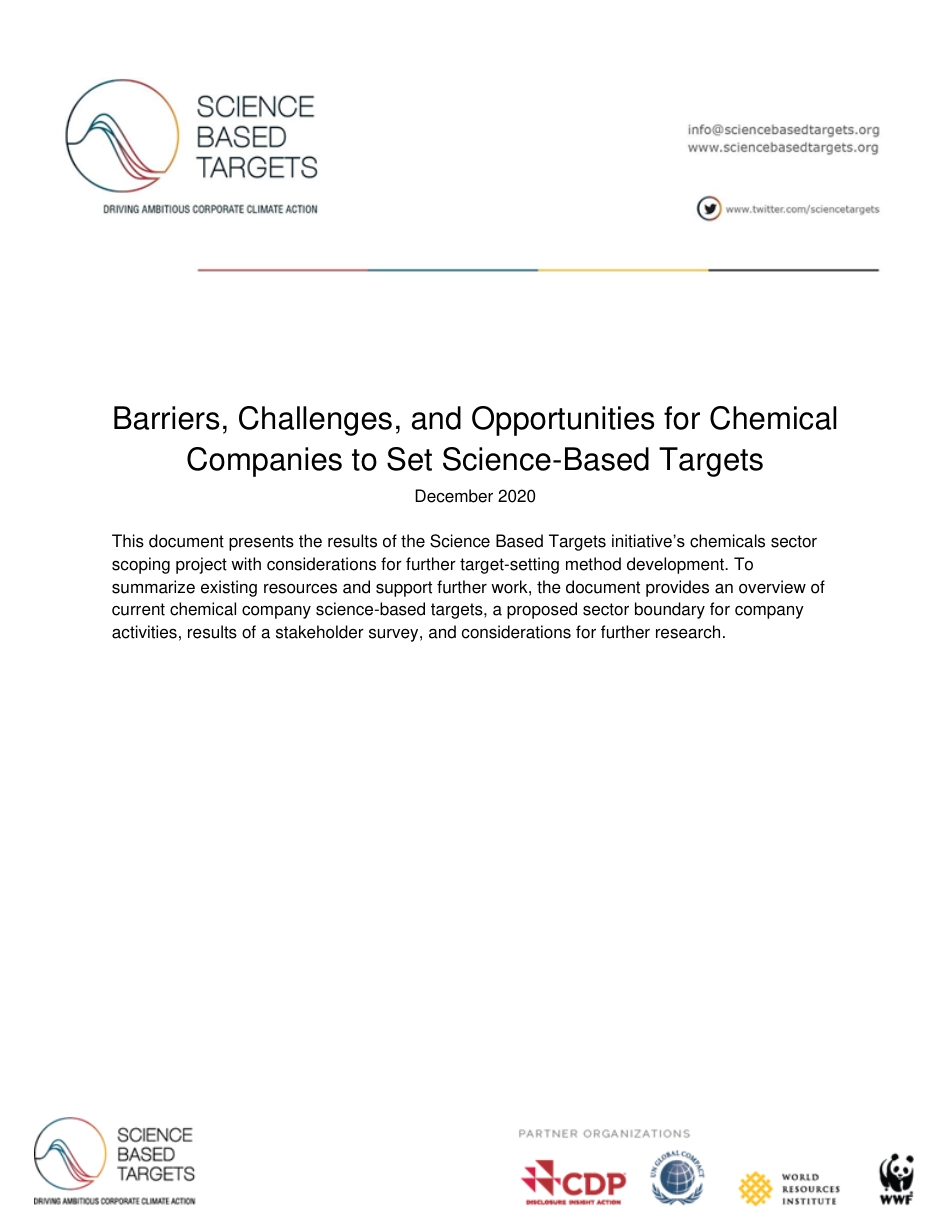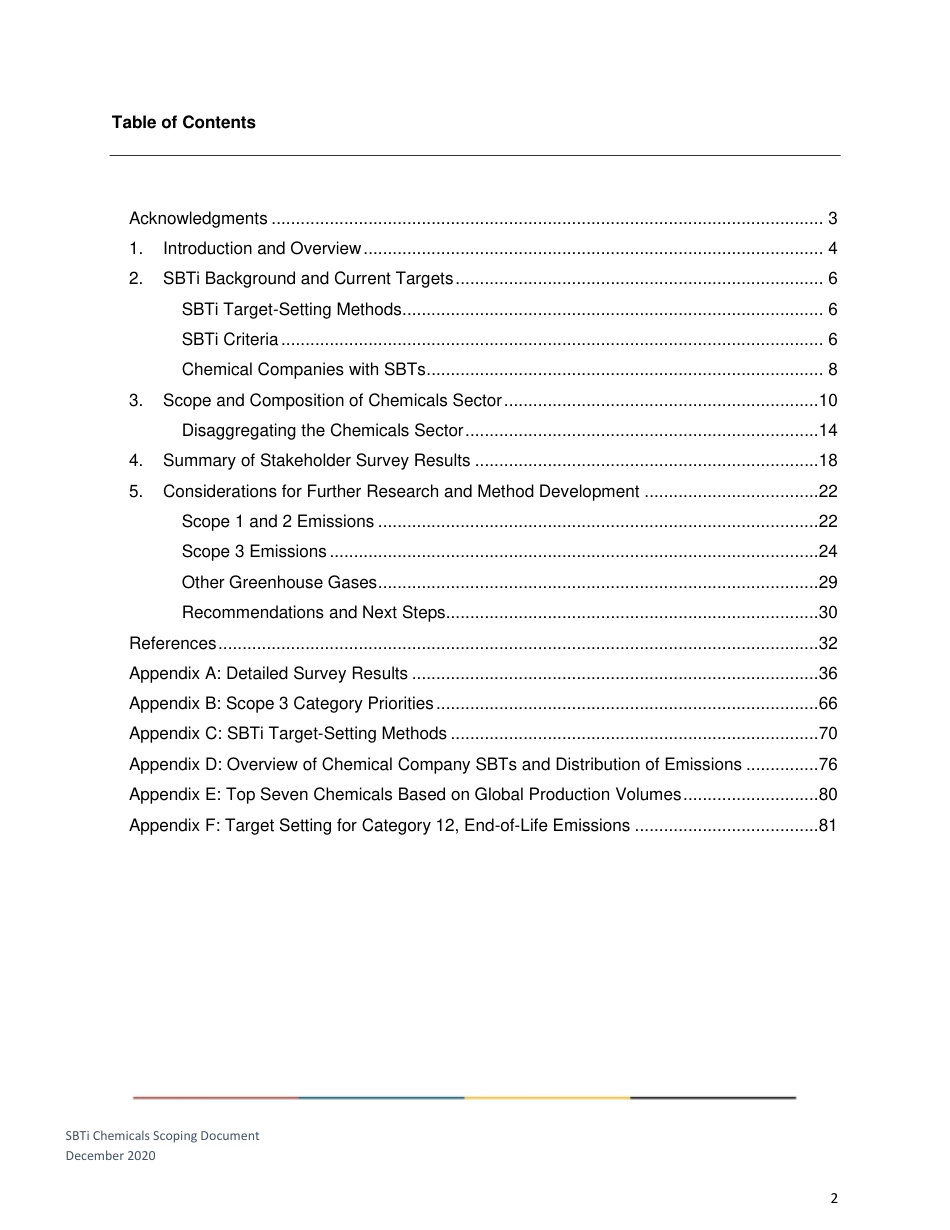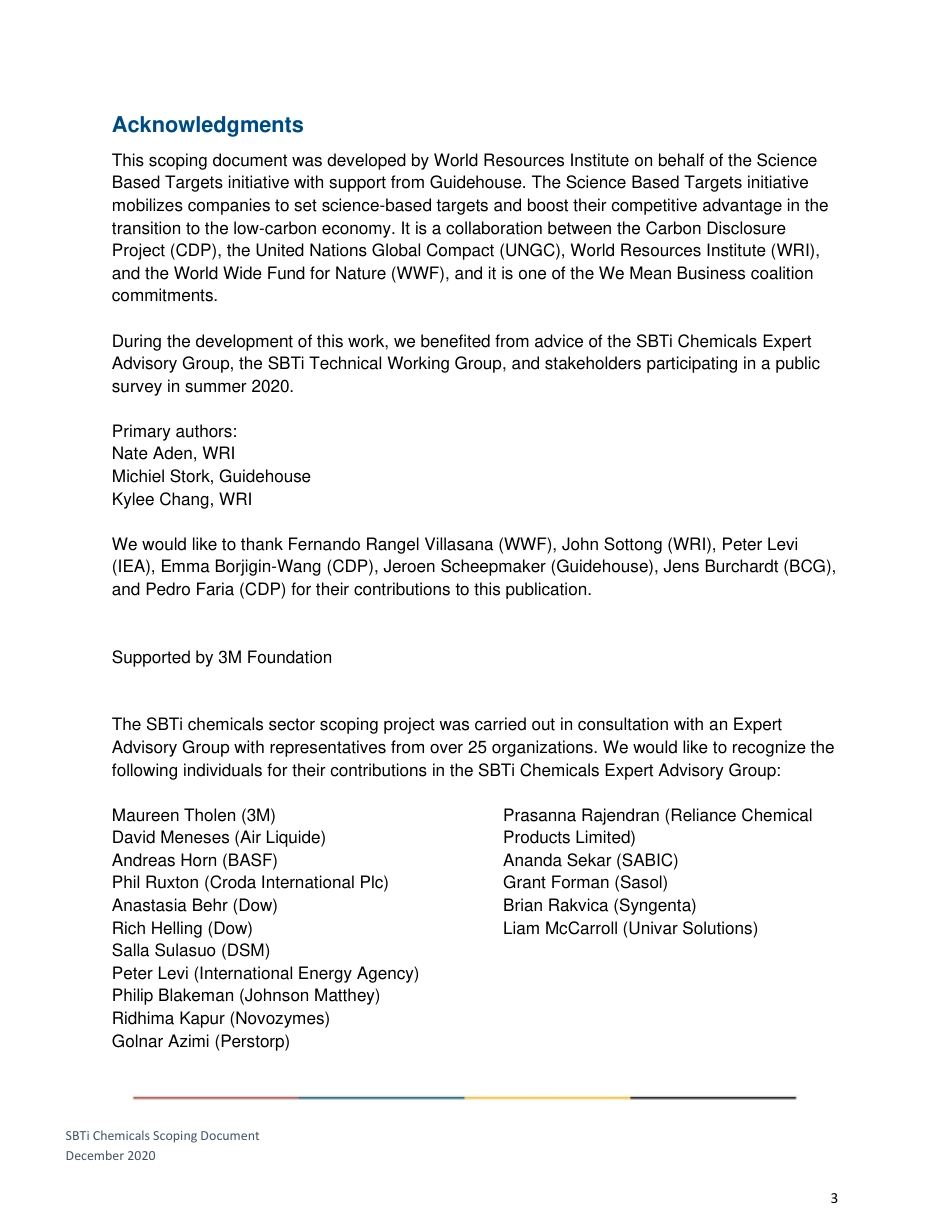Barriers, Challenges, and Opportunities for Chemical Companies to Set Science-Based Targets December 2020 This document presents the results of the Science Based Targets initiative’s chemicals sector scoping project with considerations for further target-setting method development. To summarize existing resources and support further work, the document provides an overview of current chemical company science-based targets, a proposed sector boundary for company activities, results of a stakeholder survey, and considerations for further research. SBTi Chemicals Scoping Document December 2020 2 Table of Contents Acknowledgments .................................................................................................................. 3 1. Introduction and Overview ............................................................................................... 4 2. SBTi Background and Current Targets ............................................................................ 6 SBTi Target-Setting Methods ....................................................................................... 6 SBTi Criteria ................................................................................................................ 6 Chemical Companies with SBTs .................................................................................. 8 3. Scope and Composition of Chemicals Sector .................................................................10 Disaggregating the Chemicals Sector .........................................................................14 4. Summary of Stakeholder Survey Results .......................................................................18 5. Considerations for Further Research and Method Development ....................................22 Scope 1 and 2 Emissions ...............................



